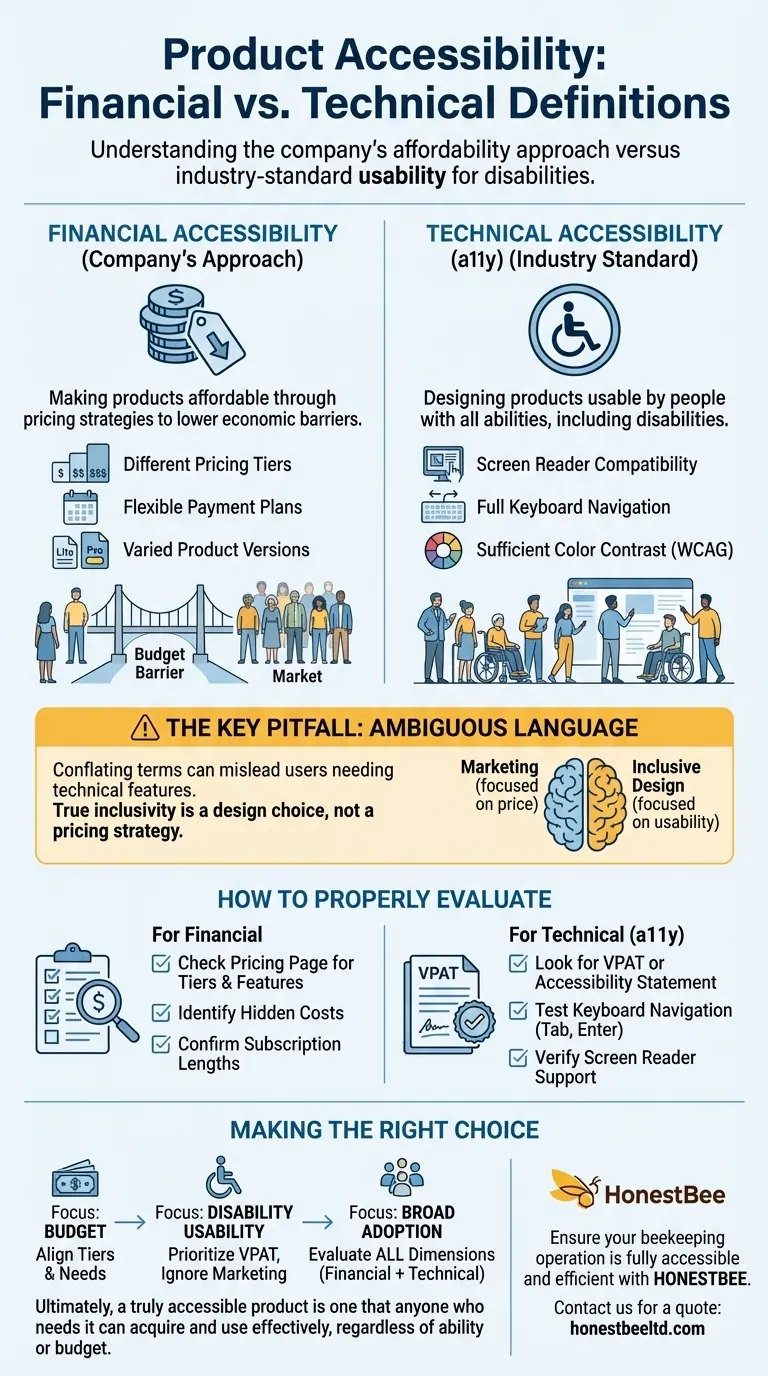In this context, the company ensures the accessibility of its premium products primarily by offering a range of options designed to suit different budgets. This strategy focuses on making the products financially attainable for a wider audience, rather than adhering to technical accessibility standards for users with disabilities.
The company's stated approach defines "accessibility" in financial terms. It is critical, however, to distinguish this from the industry-standard definition of accessibility, which ensures products are usable by people with all abilities.

Deconstructing the Meaning of "Accessibility"
The term "accessibility" can be interpreted in several ways. Understanding the distinction between the company's usage and the broader technical meaning is essential for making an informed decision.
Financial Accessibility: The Stated Approach
The company's strategy is centered on financial accessibility. This is achieved by creating different pricing tiers, payment plans, or product versions.
The goal is to lower the economic barrier to entry, allowing more customers to purchase and use what might otherwise be out of reach.
Technical Accessibility (a11y): The Industry Standard
In product development, technical accessibility (often abbreviated as a11y) refers to the practice of designing products that can be used by people with disabilities.
This includes ensuring compatibility with assistive technologies like screen readers, enabling full keyboard navigation, and providing sufficient color contrast. These practices are often guided by the Web Content Accessibility Guidelines (WCAG).
Other Dimensions of Product Access
Beyond cost and disability, true accessibility can also encompass other factors. These might include geographic availability, multi-language support, or compatibility across different operating systems and devices.
Understanding the Key Pitfall
Relying on a single definition of accessibility can be misleading. It is crucial to look beyond marketing language and evaluate a product based on specific, measurable criteria.
The Risk of Ambiguous Language
When a company states a product is "accessible," it creates an ambiguity. Users who require technical accessibility features may be misled by a claim that only refers to pricing.
This conflation of terms dilutes the critical importance of designing for users with disabilities. True inclusivity is an active design choice, not a pricing strategy.
Financial Tiers vs. Inclusive Design
While offering budget-friendly options is a positive step for market reach, it does not address the core principles of inclusive design.
A product that is affordable but unusable for someone with a visual impairment is not truly accessible. These two concepts—affordability and usability—solve for different needs and should be evaluated independently.
How to Properly Evaluate Product Accessibility
To determine if a product meets your specific needs, you must look for concrete evidence beyond general claims.
For Financial Accessibility
Examine the pricing page for different tiers, subscription lengths, or potential financing options. This will clearly outline the financial commitment required and the features included at each level.
For Technical Accessibility (a11y)
Look for a Voluntary Product Accessibility Template (VPAT) or a dedicated accessibility statement on the company's website. These documents formally declare a product's conformance with standards like WCAG.
You can also perform simple tests yourself. Try to navigate the entire product using only your keyboard's Tab, Enter, and arrow keys. If you can't reach every function, its accessibility is incomplete.
Making the Right Choice for Your Goal
Your evaluation should be guided by your primary need.
- If your primary focus is budget: Confirm that the available pricing tiers and feature sets align with your financial constraints and functional requirements.
- If your primary focus is usability for people with disabilities: Prioritize products with a public VPAT or a clear accessibility statement, and disregard any marketing claims that equate accessibility with affordability.
- If your primary focus is broad team adoption: Evaluate all dimensions, including financial, technical, and platform accessibility, to ensure no user is left behind.
Ultimately, a truly accessible product is one that anyone who needs it can acquire and use effectively, regardless of ability or budget.
Summary Table:
| Accessibility Type | Definition | Key Indicators |
|---|---|---|
| Financial Accessibility | Making products affordable through pricing tiers and payment plans. | Different pricing tiers, subscription options, financing. |
| Technical Accessibility (a11y) | Designing products usable by people with disabilities. | VPAT report, WCAG compliance, keyboard navigation, screen reader support. |
Ensure your beekeeping operation is fully accessible and efficient. At HONESTBEE, we supply commercial apiaries and distributors with high-quality, durable beekeeping supplies and equipment. Our wholesale-focused operations are designed to provide financial accessibility through competitive pricing, ensuring you get the gear you need to succeed. Let's discuss how our products can support your business goals. Contact HONESTBEE today for a quote!
Visual Guide

Related Products
- HONESTBEE Advanced Ergonomic Stainless Steel Hive Tool for Beekeeping
- Professional Dual-End Stainless Steel Hive Tool for Beekeeping
- Wooden Bee Brush with Triple Row Artificial Fiber for Beekeeping
- Professional 3-Bar Frame Grip with Integrated Hive Tool
- Classic Wooden Bee Brush with Double-Row Boar Bristles
People Also Ask
- What are the basic tools for beekeeping? Essential Starter Kit for Safe & Successful Hive Management
- How should beekeepers handle bees when using a hive tool? Master Calm, Deliberate Techniques
- Why is it important to compare the progress of different hives? A Beekeeper's Key Diagnostic Tool
- What is the hole in a hive tool for? A Multi-Tool for Apiary Repairs and Maintenance
- What are some common uses of a hive tool? Essential Multi-Purpose Tool for Every Beekeeper



















